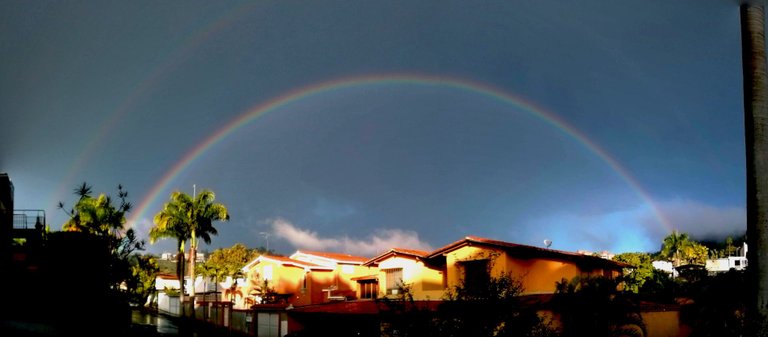
Yo tengo que empezar por admitir que yo soy un enamorado profundo de Venezuela y amo cada uno de los rincones que he visitado. Por esa razón para mí es difícil decir qué es lo que más me gusta, porque cada espacio me trae recuerdos diferentes, emociones distintas y me encanta cada una de ellas.
Pero si hay algo que me marcó desde el día que regresé a mi país, después de pasar siete años fuera, fue su clima y los colores propios del mismo. Tanto es así, que la primera crónica que yo escribí en Hive, en el marco de mi serie #Chronos, se llama Catia y el azul, done narro con detalle la primera impresión que produjeron en mí los colores del cielo de Caracas, de su sol y de sus montañas.
Pero eso es reflejo de un clima tropical, propio del Caribe. Pero lo mejor del caso es que en Venezuela puedes encontrar eso, así como un desierto, en los Médanos de Coro, un glaciar como el del Pico Bolívar, selva amazónica, llanos, playas y lo que quieras. Por lo tanto, tienes para escoger y todo está cerca.
Donde yo vivo, que e en las afueras de la capital, es una zona de mucha humedad y está a una altura de poco más de mil metros sobre el nivel del mar. Por esa razón, aunque la temperatura difícilmente baja de 13 grados, la sensación de frío es peor que cero grados en clima seco. Pero a solo 15 minutos de acá está el centro de Caracas, que es famoso por los calores que lo azotan. Y si quieres más, ruedas media hora más y ya estás en el litoral central, en nuestra playa caribeña.
Y una de las maravillas de contar con todo eso, es la facilidad de cultivo que tiene nuestro país, en el que puede nacer cualquier tipo de fruta, casi en cualquier lado.
I have to start by admitting that I am deeply in love with Venezuela and I love every corner I have visited. For that reason it is difficult for me to say what I like the most, because each place brings me different memories, different emotions and I love each one of them.
But if there is something that marked me from the day I returned to my country, after spending seven years abroad, it was its climate and its own colors. So much so that the first chronicle I wrote in Hive, as part of my #Chronos series, is called Catia and the blue, where I narrate in detail the first impression that the colors of the sky of Caracas, its sun and its mountains produced in me.
But that is a reflection of a tropical climate, typical of the Caribbean. But the best thing is that in Venezuela you can find that, as well as a desert, in the Médanos de Coro, a glacier like the one on Pico Bolivar, Amazon jungle, plains, beaches and whatever you want. So, you have a lot to choose from and everything is close by.
Where I live, which is on the outskirts of the capital, is an area of high humidity and is at an altitude of just over a thousand meters above sea level. For that reason, although the temperature hardly drops below 13 degrees, the cold sensation is worse than zero degrees in dry weather. But just 15 minutes from here is the center of Caracas, which is famous for the heat that lashes it. And if you want more, drive half an hour more and you are already in the central coast, in our Caribbean beach.
And one of the wonders of having all this, is the ease of cultivation that our country has, in which any type of fruit can be born, almost anywhere.
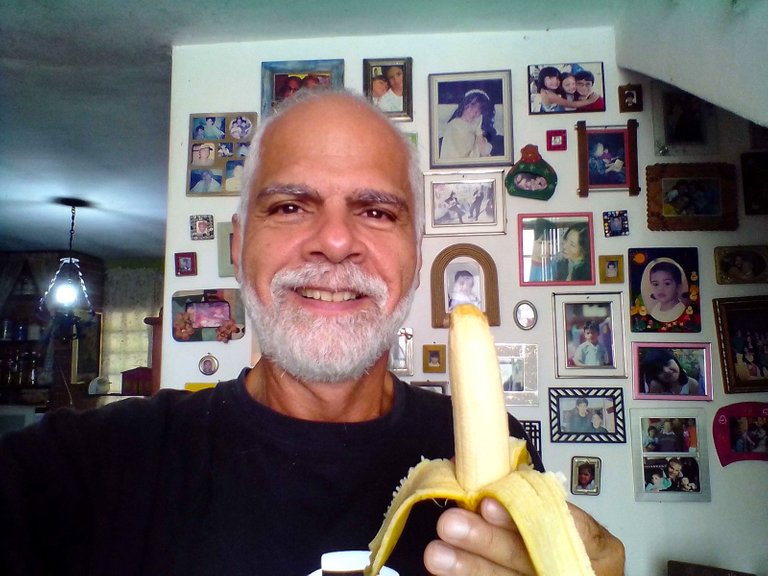
En mi casa se dan, de manera casi salvaje, varias frutas. Pero entre ellas, mi preferida es el cambur. Tengo tres matas de esta especie y lo único que requieren es que, una vez que cosechas la fruta, lo cortas en la base y dejas a uno de los hijos (que van naciendo por los lados) para que empiece a desarrollarse.
Desde el momento en que nace la flor, hasta que el cambur está listo para cosecharse, pasan varios meses y no siempre se dan los frutos en el momento que uno quisiera.
Pero hace un par de semanas coincidió de manera maravillosa, que acabando de cosechar, vi nacer la flor de un nuevo fruto. En la foto de arriba me pueden ver disfrutando de uno de los cambures de la cosecha previa, que es de una variedad que se da mucho en el estado Zulia, al occidente del país, que llaman "guineo quinientos", que tiene la característica de ser una planta que no alcanza los dos metros de altura, por lo que es muy fácil de cuidar. Otra característica curiosa es que muchas veces el fruto, aunque esté maduro, sigue manteniendo su color verde, algo que nos confundió mucho las primeras veces que los cosechamos.
Aquí abajo, pueden ver parte del racimo, pues ya nos habíamos comido una buena parte...
In my house there are several fruits that grow almost wild. But among them, my favorite is the banana. I have three bushes of this species and the only thing they require is that, once you harvest the fruit, you cut it at the base and leave one of the children (which are born on the sides) to begin to develop.
From the moment the flower is born until the banana is ready to be harvested, several months go by and the fruit does not always come at the moment you would like it to.
But a couple of weeks ago it was a wonderful coincidence that, just after harvesting, I saw the flower of a new fruit being born. In the photo above you can see me enjoying one of the bananas from the previous harvest, which is a variety that is very common in the state of Zulia, in the west of the country, called "guineo quinientos" (five hundred guineo), which has the characteristic of being a plant that does not reach two meters in height, so it is very easy to take care of. Another curious characteristic is that many times the fruit, even when ripe, keeps its green color, something that confused us a lot the first times we harvested them.
Here below, you can see part of the bunch, since we had already eaten a good part...
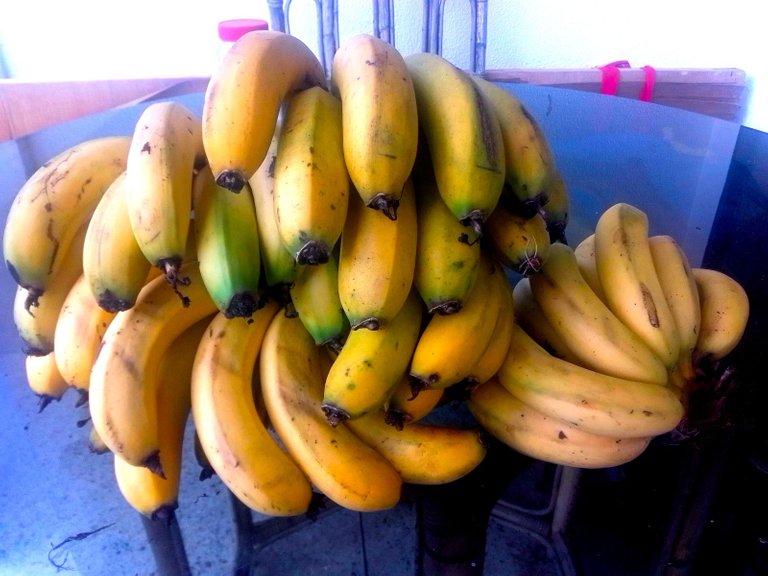
Lo más emocionante fue descubrir, antes de acabarnos el racimo completo, algo que muchas veces quise hacer y nunca lo lograba: ver la flor apenas empezara a desarrollarse. Como una de estas matas está justo al lado del garage, al llegar un día a casa, pude ver la flor recién salida. Generalmente descubría que venía un racimo nuevo, cuando ya estaba grande y desarrollado, pero esta vez vi la llamada "bellota" (quizá por el parecido con esos frutos) apenas nació y desde entonces he ido tomando fotos de las primeras etapas de esta flor, hasta adquirir su aspecto de cambures de verdad.
Por cierto, esa bellota es muy usada en la cocina asiática, quienes la consumen como una verdura, algo que no es común en nuestra tierra, pero que valdría la pena probar.
The most exciting thing was to discover, before we finished the whole bunch, something I often wanted to do and never did: to see the flower as soon as it started to develop. Since one of these bushes is right next to the garage, when I got home one day, I could see the flower just coming out. Usually I discovered that a new bunch was coming, when it was already big and developed, but this time I saw the so called "acorn" (maybe because of the resemblance with those fruits) as soon as it was born and since then I have been taking pictures of the first stages of this flower, until it acquired its appearance of real bananas.
By the way, this acorn is widely used in Asian cuisine, who consume it as a vegetable, something that is not common in our land, but it would be worth trying.
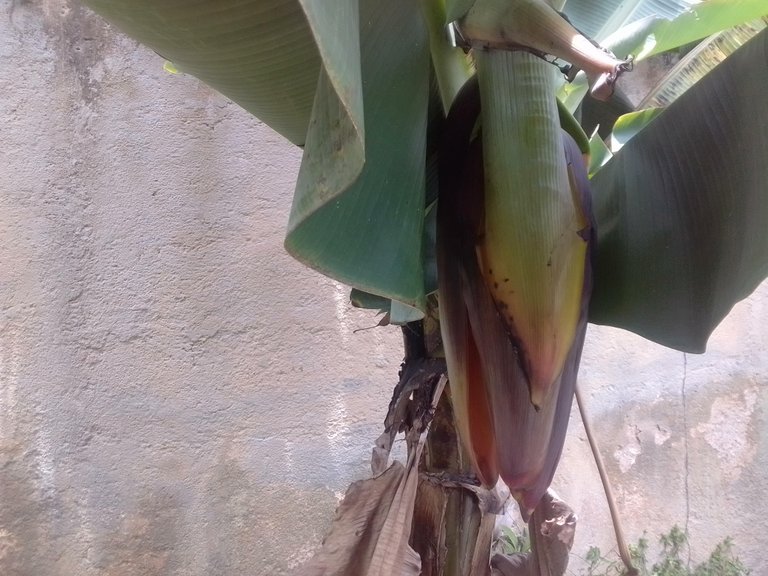 | 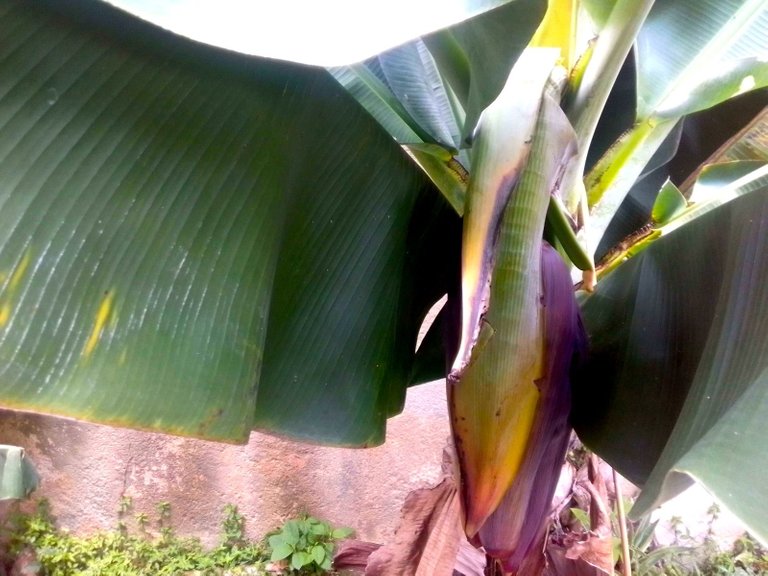 |
|---|
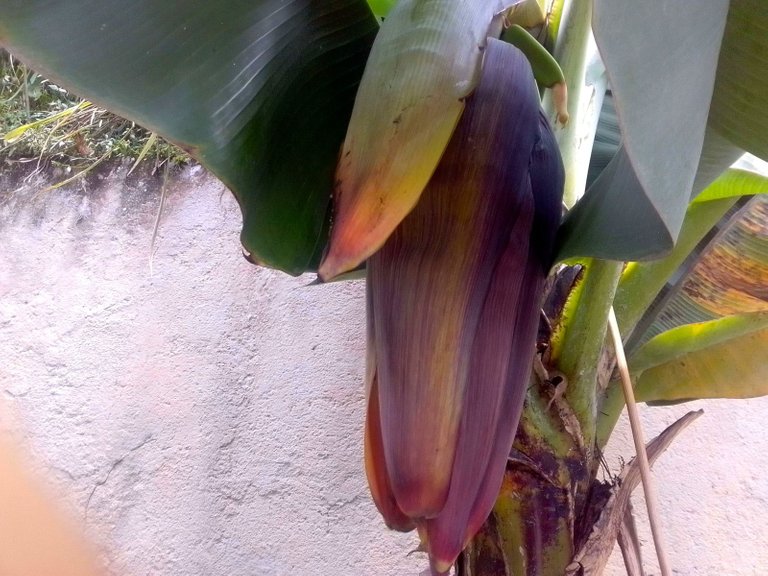
Apenas unos días después, empiezan a asomar ya los brotes que se convertirán en frutos. Es el momento en que tienen más aspecto de flor.
Just a few days later, the buds that will become fruit begin to appear. This is the moment when they look more like flowers.
| 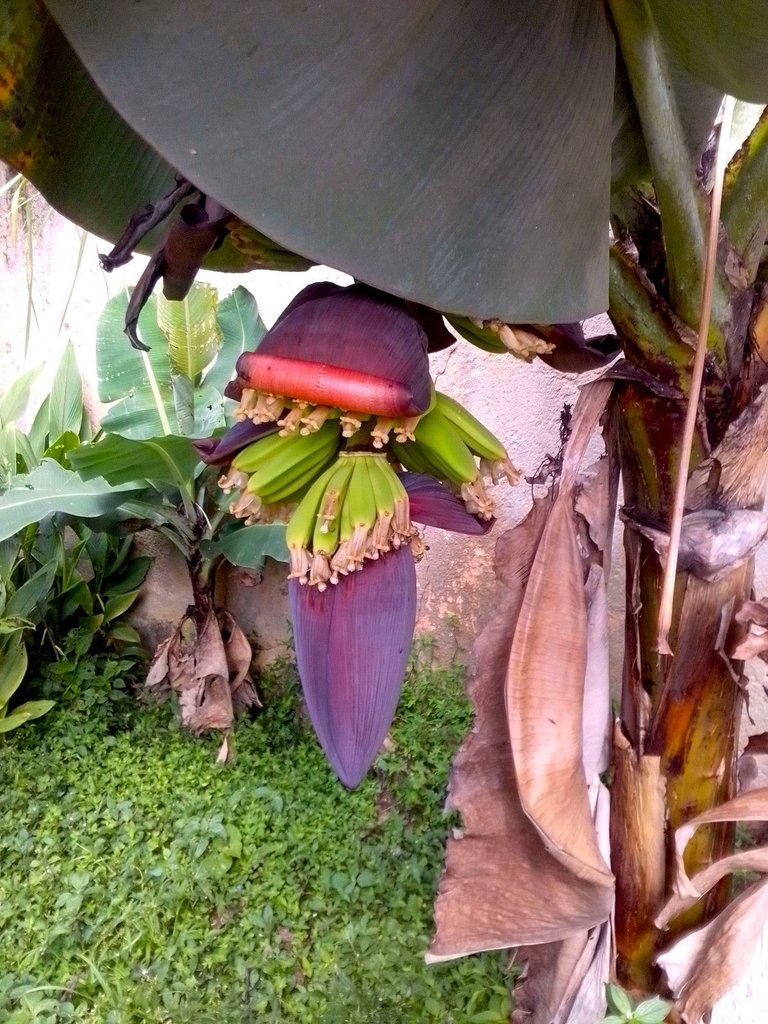
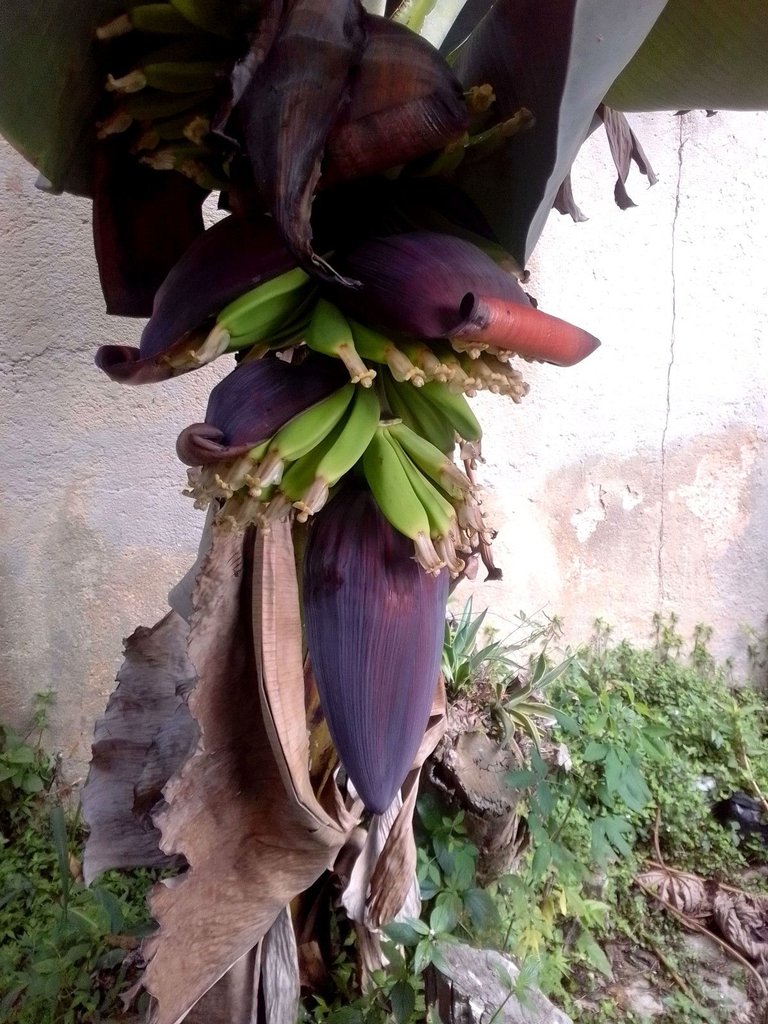 | 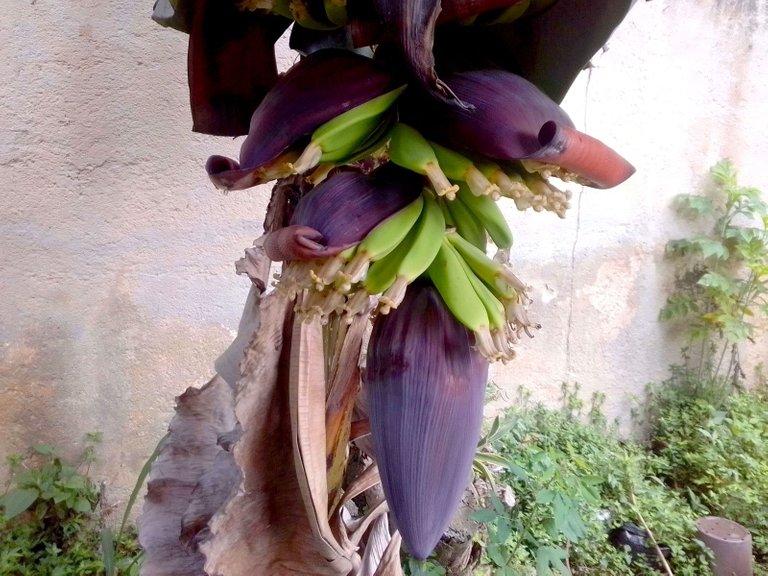 |
|---|
Esta primera parte del proceso es bastante rápida, pero luego el proceso se torna más lento, que es mientras van creciendo hasta alcanzar su tamaño regular.
This first part of the process is quite fast, but then the process slows down as they grow to their regular size.
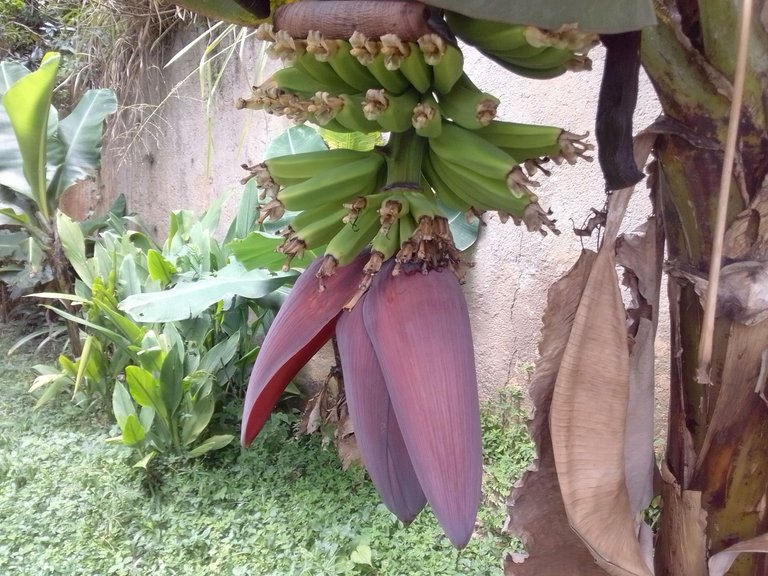 | 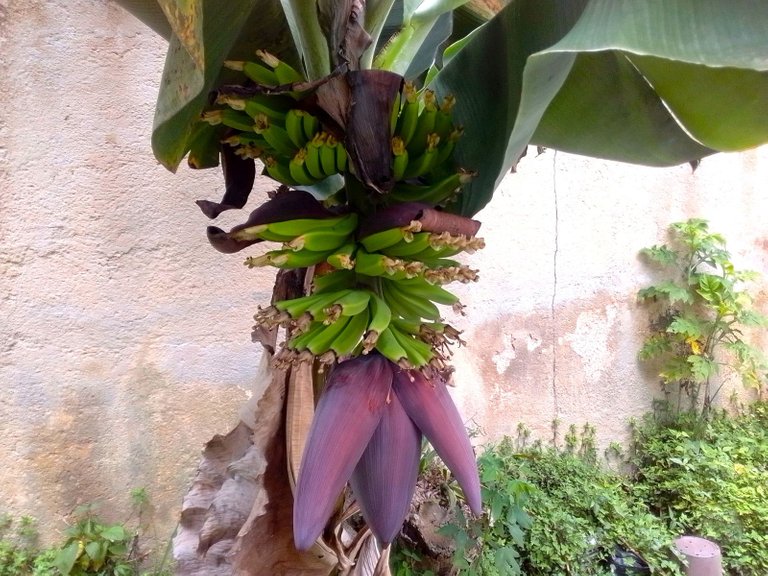 |
|---|
Todas estas imágenes fueron tomadas con solo días de diferencia.
All of these images were taken only days apart.
 | 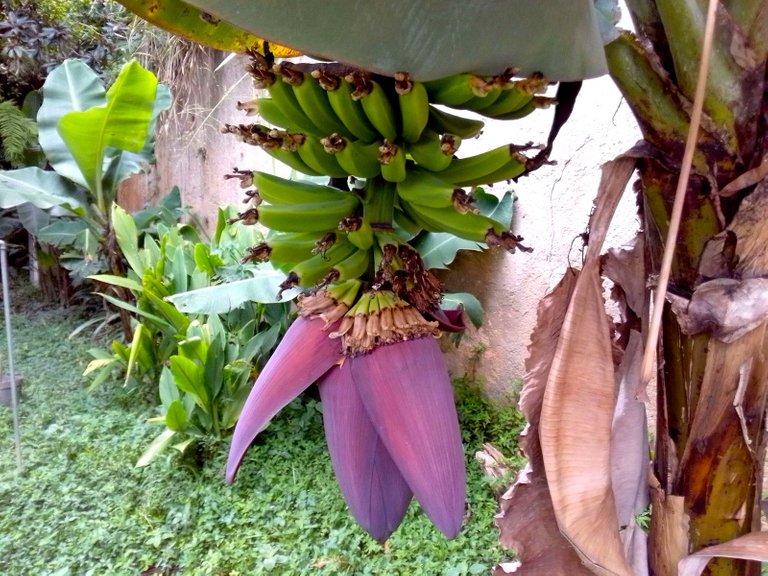 |
|---|
Y muchos se preguntarán ¿qué tienen que ver estos cambures con las maravillas de Venezuela? Y es precisamente, que viene a ser otra muestra de lo rica que es nuestra tierra, done además de todas esas maravillas geográficas que mencionaba al comienzo del post, aparte de su riqueza cultural, humana, histórica, esta tierra cuenta con un suelo extraordinario, capaz de poner a producir cualquier rincón y regalarnos estas maravillas, prácticamente sin ningún esfuerzo.
And many will wonder what do these bananas have to do with the wonders of Venezuela? And it is precisely that it comes to be another example of how rich our land is, done in addition to all these geographical wonders that I mentioned at the beginning of the post, apart from its cultural, human, historical richness, this land has an extraordinary soil, capable of producing any corner and give us these wonders, with virtually no effort.
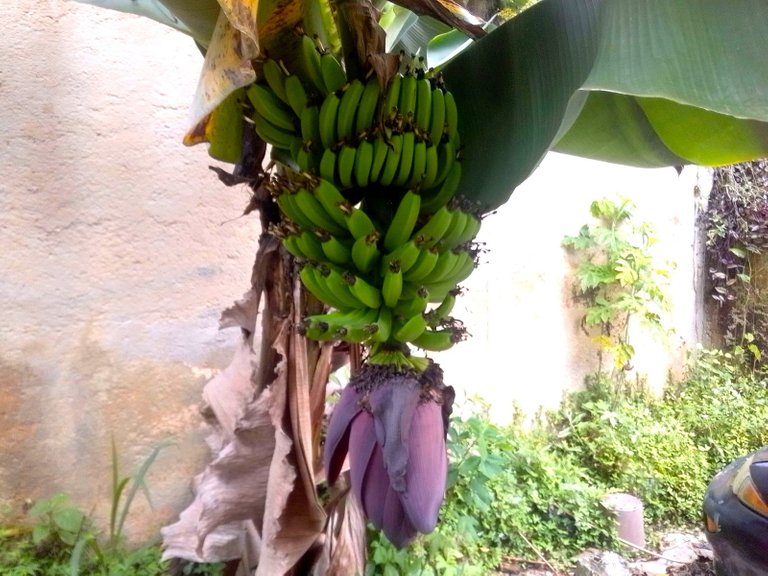
En esta última imagen ya se pueden ver claramente los cambures, a los cuales solo les falta seguir aumentando su tamaño, de lo cual se encargará nuestro amarillo sol, nuestro clima tropical, nuestro rico suelo, que es solo una diminuta parte de este prodigio que es Venezuela.
Esta es mi participación para la Iniciativa ¿Qué es lo que más te gusta de VENEZUELA?, en el que mi aporte artístico es la fotografía (en la cual no suelo destacar mucho. que digamos) a la cual le puse el máximo empeño para esta publicación.
Valga mencionar que las fotos fueron tomadas con mi cellular Blu G5 y editadas con GIMP.
In this last image you can clearly see the banana trees, which only need to continue increasing their size, which will be taken care of by our yellow sun, our tropical climate, our rich soil, which is only a tiny part of this prodigy that is Venezuela.
This is my participation in the What do you like most about VENEZUELA? initiative, in which my artistic contribution is photography (in which I don't usually stand out much, let's say) to which I put the maximum effort for this post.
It is worth mentioning that the photos were taken with my Blu G5 cellular phone and edited with GIMP.

If you don't have an account at Hive yet, I invite you to read my post My Hive Testimony || Mi testimonio Hive
Si aún no tienes cuenta en Hive te invito a leer mi publicación My Hive Testimony || Mi testimonio Hive

